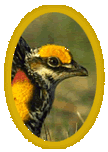Welcome to the Lek Trek Website!
Why we need the Lek Trek
How the Lek Trek Works
Register to participate here! Prizes! Sign up for Lek Trek Miles here!
Lek Trek Special Events
Photo gallery of Missouri prairie species
The Missouri Grasslands Coalition
Contact the Lek Trek Team
Where to see prairies
The Lek Trek Prairie Photo Gallery
Click on a thumbnail to view the larger version of each photo
 |
Missouri's prairies are not just grass. They are communities of hundreds of kinds of plants. |
 |
Bison, one of North America's largest prairie mammals, no longer occur naturally in Missouri. Small introduced numbers of bison at Prairie State Park offer visitors a suggestion of the great herds that once roamed the prairie region. |
 |
The scissor-tailed flycatcher is a flamboyant prairie bird with a nine inch-long tail. Common in southern Great Plains states, scissor-tails also grace prairies and grasslands in southwestern Missouri, the northern edge of their range. |
 |
Two male prairie-chickens face off on a "lek" or courtship ground. While their booming calls were once commonly heard on Missouri's prairies, the prairie-chicken is now state endangered, with fewer than 1,000 birds in the state in 1999. If the present trends continue, the prairie-chicken will be gone from Missouri by 2005 |
 |
Along with shrubby plants, quail need high quality grasslands for successful nesting and brood-rearing. Bunch grasses such as those found in prairies provide concealment for nests and open spaces at ground level for the movement of young chicks. |
 |
The northern crayfish is one of seven crayfish species that inhabit streams in the prairie regions of Missouri. This female carries an eggmass under her tail. |
 |
The Topeka shiner is a one-to three-inch fish indicative of high quality prairie streams. Now federally endangered, numbers of Topeka shiners have dropped throughout the fish's range in Minnesota, South Dakota, Iowa, Kansas, Nebraska and Missouri. Like other prairie aquatic life, the Topeka shiner can not survive habitat destruction due to excessive soil erosion, fertilizer runoff, livestock manure and improperly functioning septic systems, unerestricted urbanization, stream channelization, improper gravel removal and headwater impoundment construction. |
 |
The pink katydid is a delightful prairie enigma. Known to occur on just one Missouri prairie, this rare pink form of the round-winged katydid is always a thrilling sight to behold. |
 |
Two regal fritillaries feed on butterfly milkweed on a Missouri prairie in June. the bright orange, black and silver-spotted insects are now rare in Missouri and throughout North America, due to our great loss of prairie habitat. |
 |
The sun sets on a Missouri prairie behind big bluestem, one of the dominant species of prairie grasses. Big bluestem can reach 12 feet in the air, and its roots have been found just as deep in the earth. |
 |
Magenta blazing star and white Culver's root are two showy prairie wildflowers. |
 |
Despite their delicate appearance, pale purple coneflowers are resilient, like our remaining Missouri prairies. |
